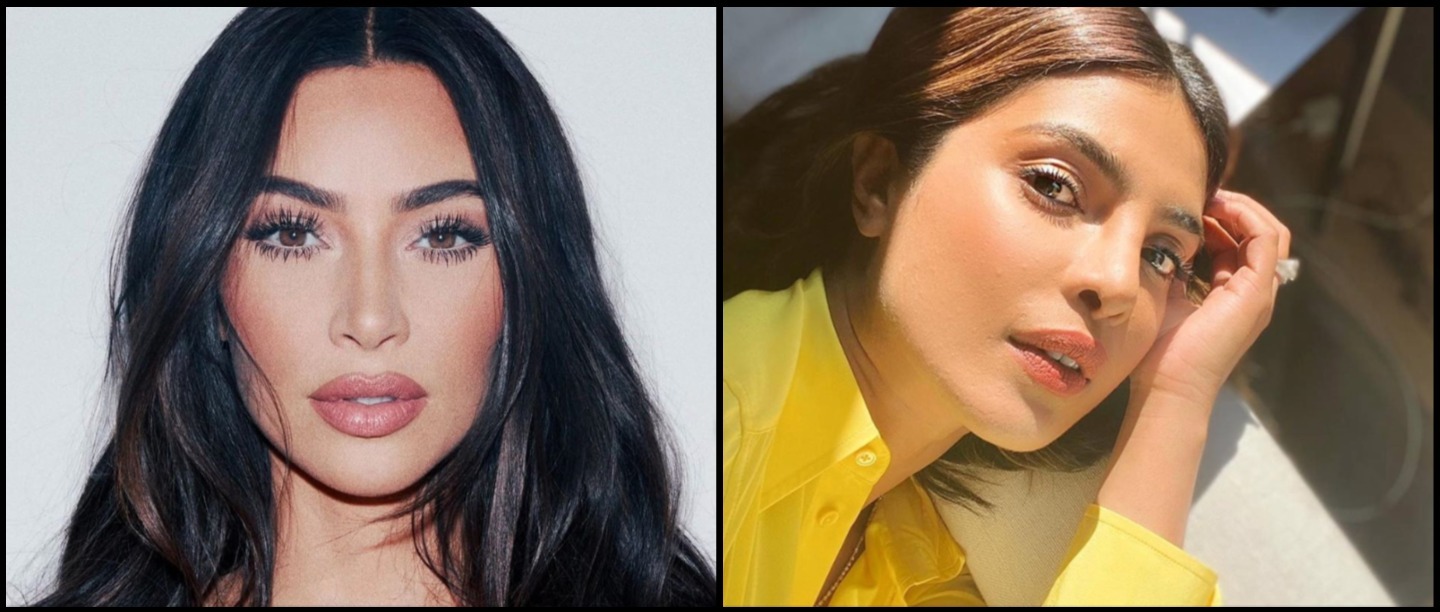Table of Contents
Even if you’re familiar with the beautyverse, it’s easy to think that contouring and bronzing are interchangeable terms used for smearing product on your cheeks to get a more chiselled appearance. This is actually not true. The two are very different aspects of makeup that serve different purposes. So, in today’s beauty basics lesson, we’re going to be explaining the difference between bronzing and contouring.
What is Contouring?

Contouring is a makeup trend that allows you to follow the natural shadows of your face and give the illusion of a more sculpted look. It creates structure, dimension and symmetry on the face and it’s a Kardashian-approved way of looking red carpet ready, always. While it could seem a little daunting at first, understanding these contouring basics could help you break it down.
Step By Step Guide To Contouring
Step 1: Do your base as you would normally. Start with a primer, use a colour corrector if required and then move onto the foundation.
Step 2: Because the foundation doesn’t have as much coverage, a little help from the concealer is always welcome. Use a concealer that’s one shade lighter than your skin tone and highlight the parts of your face that would naturally catch the light- the bridge of your nose, the centre of your forehead, your chin and under your eyes. These areas will look brighter and hence draw attention to the centre of your face.
Step 3: Find the hollows of your cheekbones, sides of your nose, tops of your temple area and your jawline and use a contour stick or powder to follow along those lines. Be sure to use a cool-toned product that is two shades darker than your skin tone because then it will be able to imitate the natural shadows of your face. Blend it well with your damp beauty sponge so that there are no harsh lines.
Step 4: Because you’ve used cream products, setting them in place with powders is essential. Use a translucent powder where you’ve highlighted and use an ashy toned contour powder where you’ve contoured.
Step 5: Set it all in place with makeup setting spray so that it looks seamless and voila, you’re done!
What is Bronzing?

Bronzing is when you’re adding colour to your skin and making it look like you’ve spent days on a beachy vacation. For a visual reference, think of JLo’s tanned look. Because it uses warm tones, bronzing doesn’t actually sculpt your cheeks or add structure, in fact, it adds a glowy warmth and sometimes even shine to your face. Now, do you get the difference between contour and bronzer slightly?
Step By Step Guide To Bronzing
Step 1: Do your base as you would normally. We’re talking foundation, concealer, loose powder, everything.
Step 2: Apply bronzer with a large face powder brush to your cheeks and forehead to add some flush of colour. The trend these days allows you to add so much bronzer that you can forget about blush to make your cheeks rosy.
Step 3: Set it all in place with a makeup setting spray and let the powders, creams and liquids work together.
What Is The Difference Between Contouring And Bronzing?
Okay, let’s get to the main point of the article and understand what the difference between a contour and bronzer really is.
|
Contouring |
Bronzing | |
|
Function |
Used to add definition, structure and sculpt the face. |
Used to add colour, warmth and a tanned glow to the face. |
|
Undertones |
Has ashy undertones |
Has warm undertones |
|
When is it applied |
Applied first |
Applied afterwards |
|
Finish |
Only comes in a matte finish |
Comes in a matte and shimmery finish |
|
Where is it applied |
Hollows of your cheeks, jawline, sides of the nose, temples |
In the shape of a three on your face hitting the cheeks, temples and jaw |
|
Applicator To Use |
Angled contour brush |
Fluffy, large face brush |
|
Why is it used |
To accentuate the natural shadows and hollows of your face |
To warm the skin so can replace blush and be put on the apples of the cheeks |
|
Blending |
Takes time to blend, need to go over it with a damp beauty sponge |
Easier to blend |
Can I Apply A Bronzer & Contour Together?
While many people will tell you to follow rules in makeup, our suggestion is you do you, boo! If you can’t choose between bronzer vs contour, you can apply them both. Apply the contour first and then use bronzer to add colour to your cheeks. Just know that applying too much bronzer on your contour can hide the chiselled look and make you look more tanned instead.
Which Is Better- Bronzer Vs Contour?
Again, there’s no one answer to this question. There isn’t any product or trend that is better than the other, it’s about your personal preference and choice. When we’re thinking of contour vs bronzer, we have to understand the different purposes that they solve and which kind of look you want to achieve. If going for a warm, tanned look is more you then a bronzer is better but if a defined, runway-ready look is something that you feel more comfortable in, then a contour stick or palette would be better for you.
After reading this article, we’re hoping you’ve understood the difference between contouring and bronzing. But we once again would like to tell you that you don’t need to play by any rules when it comes to makeup- you’re the artist and your face is the canvas. So try out the various techniques and styles and see what you like most!
Featured Image: Instagram





